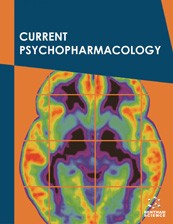The rapidly changing composition of the global street drug supply and Its effects on high-risk groups for COVID-19

Abstract:
Background: Globally, an alarming number of pharmaceutically active compounds are now routinely added to the street drugs of abuse, cocaine and heroin. In some cases, seventeen (17) or more potentially toxic compounds are found in a single street purchased bag or block of cocaine or heroin. Pharmacologically active compounds, impurities, or breakdown products from drug manufacturing and industrial chemicals (collectively referred to as toxic adulterants) are now found in street drugs. They include, but are not limited to: antipsychotics, antidepressants, anxiolytics, antihistamines, anthelminthics, anesthetics, anti-inflammatorys, antipyretics, analgesics, antispasmodics, antiarrhythmics, antimalarials, veterinary medications, broncho-dilators, expectorants, sedatives, muscle relaxers, natural/synthetic hallucinogens, decongestants, new psychoactive substanc-es (NPS), industrial compounds, fungicides, and impurities in the manufacturing process. All can be found within a single street purchase of heroin or cocaine. Routine clinical or workplace drug testing will not detect all these toxic adulterants. Only specialty forensic tests, specifically ordered, will detect them. The synergistic effect on the human body of such an unprece-dented combination of pharmacologically active compounds is unknown and potentially deadly. This is especially seen in daily abusers who are exposed to these combinations multiple times a day over an extended period of time. Individuals with substance use disorders (SUDs) have several co-occurring health problems that make them more susceptible to Covid-19, including compromised immune, pulmonary, cardiovascular, and respiratory systems. These problems are high-risk factors for the acquisition of Covid-19 infection and more serious complications from the virus, including hospitalization and death.
Objective: To bring to the attention of public health officials, addiction medicine specialists, treatment officials, therapists, and the general public the alarming increase of dangerous toxic adulterants being added to street drugs and their potentially lethal synergistic effects. Also, to provide insights into how these new formulations can have serious pathophysiological effects on individuals with Substance Abuse Disorders (SUDs) during the COVID-19 pandemic.
Methods: The literature on street drug cutting agents, toxic adulterants, NPS, manufacturing byproducts, and other industrial compounds will be reviewed. Also a review of the literature of pathophysiological effects, especially on SUD patients, in light of the COVID-19 pandemic will be presented. This is combined with international and USA studies that were carried out by the Colombo Plan that identified these new combinations of toxic adulterants in street drugs, using state of the art field and forensic laboratory detection technologies.
Results: The majority of street drugs, in some cases more than ninety-five percent, now have multiple toxic adulterants. It is rare that a street purchase of cocaine or heroin does not contain multiple toxic adulterants, cutting agents, NPS, manufactur-ing byproducts, or industrial chemicals.
Conclusion: This dangerous new composition in world street drug supply is unprecedented and may be the undetected cause of many psychostimulant and opioid overdose deaths, as many toxic adulterants are not routinely tested in post-mortem or street drug seizure cases. In addition, several of these toxic adulterants create a catastrophic drop in white blood cells, causing neutropenia and making the abusers susceptible to a wide range of opportunistic infections, including COVID-19. This pro-found change in the world street drug supply has catastrophic implications for individuals with SUDs and our health care system, especially in the era of the COVID-19 pandemic.